Overall
If it weren’t for the runout, this would be a 4-star route. The approach is super easy, the climbing is overall fun, the belay ledges are nice, the descent (walk off) is super nice, it ends on a summit, etc. But the freaking runout… it was barely within my comfort level (and I consistently climb 5.10+ sport and 5.10- trad at crags). P4 would have been way more fun if there were some bolts there. Not sure I’d be eager to do the climb again, but it was really great otherwise.
Gear brought
- Cams 0.3-3 with doubles 0.5-2 (this was perfect)
- Nuts (used nuts on most pitches)
- 13 draws (mostly alpine with 1 double alpine and a few sport draws, perfect amount)
- Crack gloves (useful a few times)
- 70m rope (60m prolly would have been fine)
- Small backpacks with shoes + rope bag left at base
- NO walkie talkies (communication was good enough)
Timeline
Temperatures were low of 40 and high of 57, was slightly cold but not bad.
- 6:30 parked
- 6:45 trailhead
- 7:25 base (40 min approach)
- 7:45 climbing
- 12:00 top (4:15 hr climbing)
- 12:35 descending
- 1:05 junction
- 1:20 base (50 min descent back to base)
- 1:35 heading down
Approach
Super easy! Took us 40 minutes at a casual pace, nice trail. Getting to the base of P1 required one non-exposed 5th class move to get up onto the base ledge.

P1 – 5.7, ~150′
This was a bit sustained, but reasonably protected. Belayed off the second tree on the ledge.
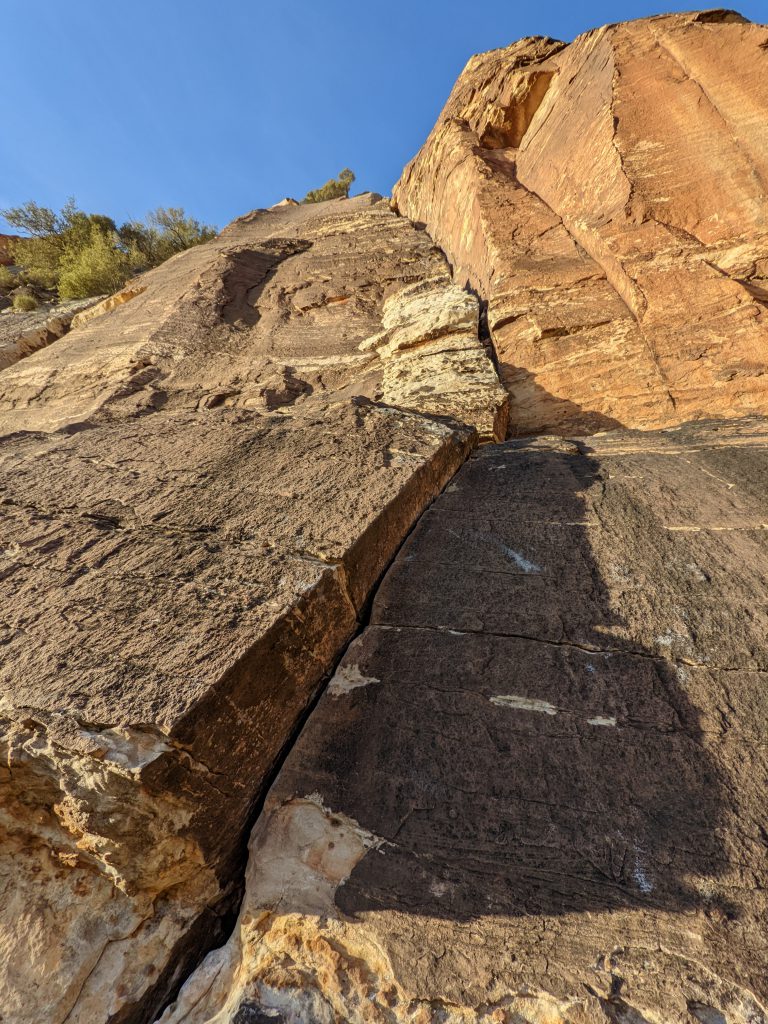
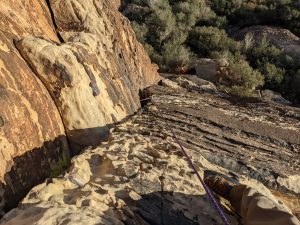
P2 – 5.7, ~150′
I followed up the corner system and ended belaying about 15 ft below the next big tree on a nice ledge.
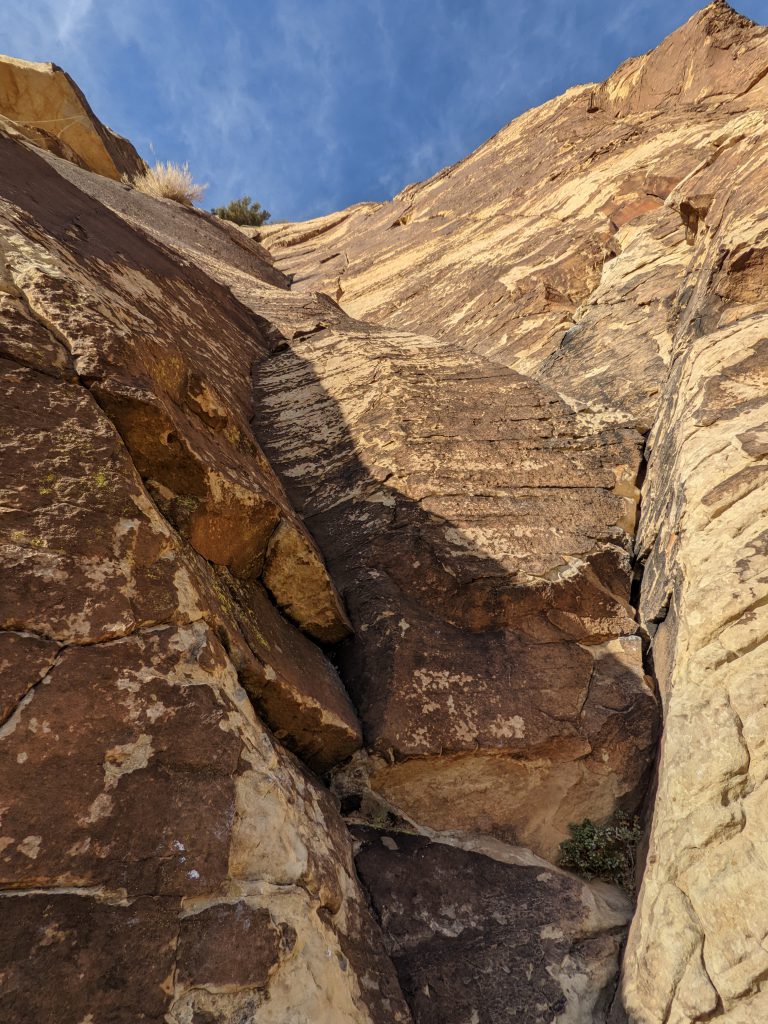
P3 – 5.6, ~100′
From the belay, I went up 10′ and then traversed left 10′ (easy traverse, big hands and good feet) and then followed up the corner. Near the end, I took a LONG time to figure out where to end the pitch, since the start of P4 looked ridiculously impossible. See the P4 to identify the start and therefore where to belay (no one seemed to take photos of that first part).

P4 – 5.8 (I’d say 5.9), ~100′
The start of P4 is immediately runout… you climb tiny face moves to the left of the corner without any gear until 15 feet up. It looks absolutely impossible, but it’s actually possible. Start far left, even though it feels safer to be closer to the corner.
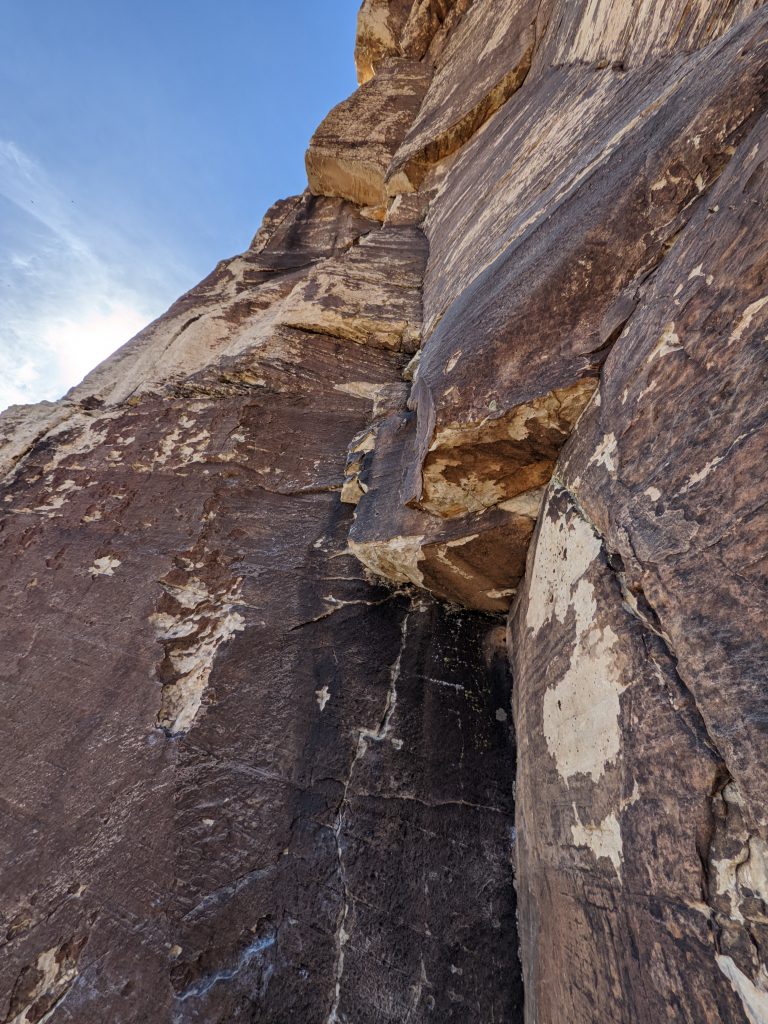
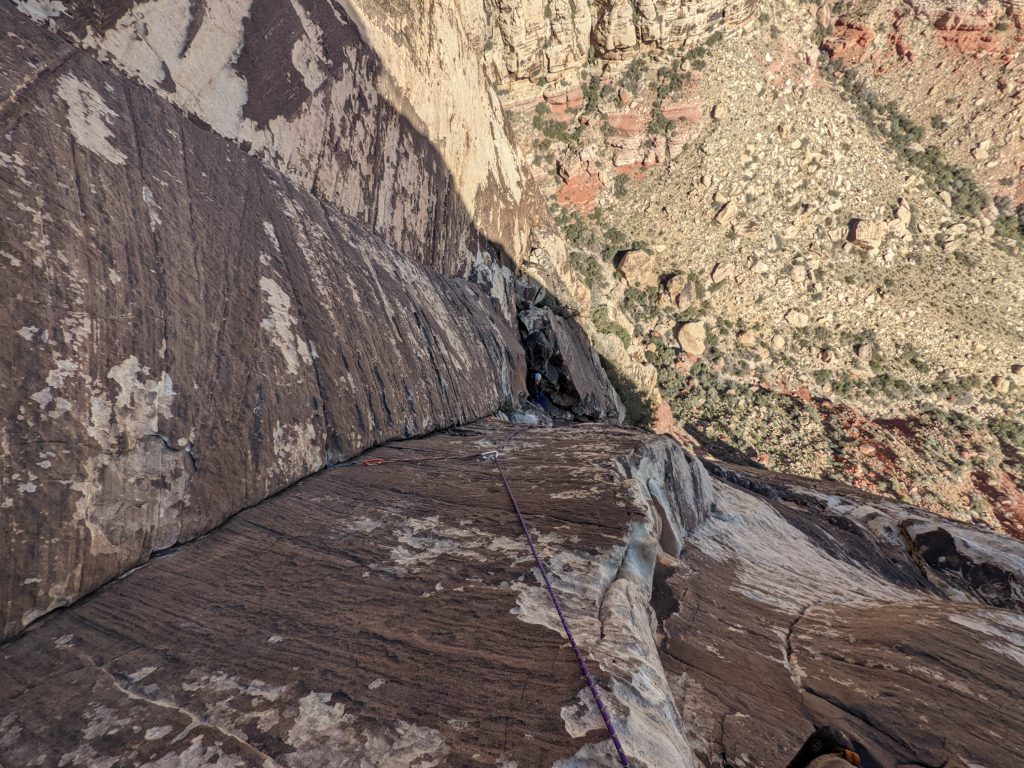
Then there’s the actual traverse, which again is runout. The key is to not go too high. Place a #2 in the crack with an alpine draw, and with your hands just below the #2 keep traversing left. The final step to the left edge is quite the leg reach and quite committing. Once on the arete, you can’t really place any gear till you get higher up, so just keep climbing till you get to the belay ledge just above the roof (you’ll still be able to see your follower).
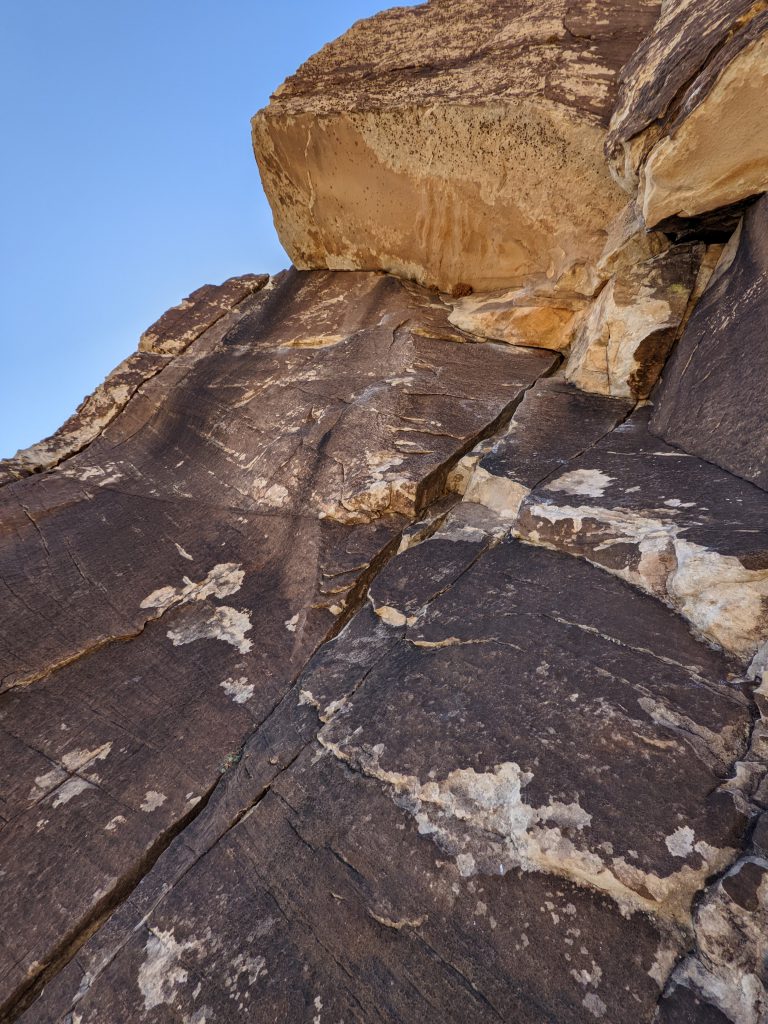
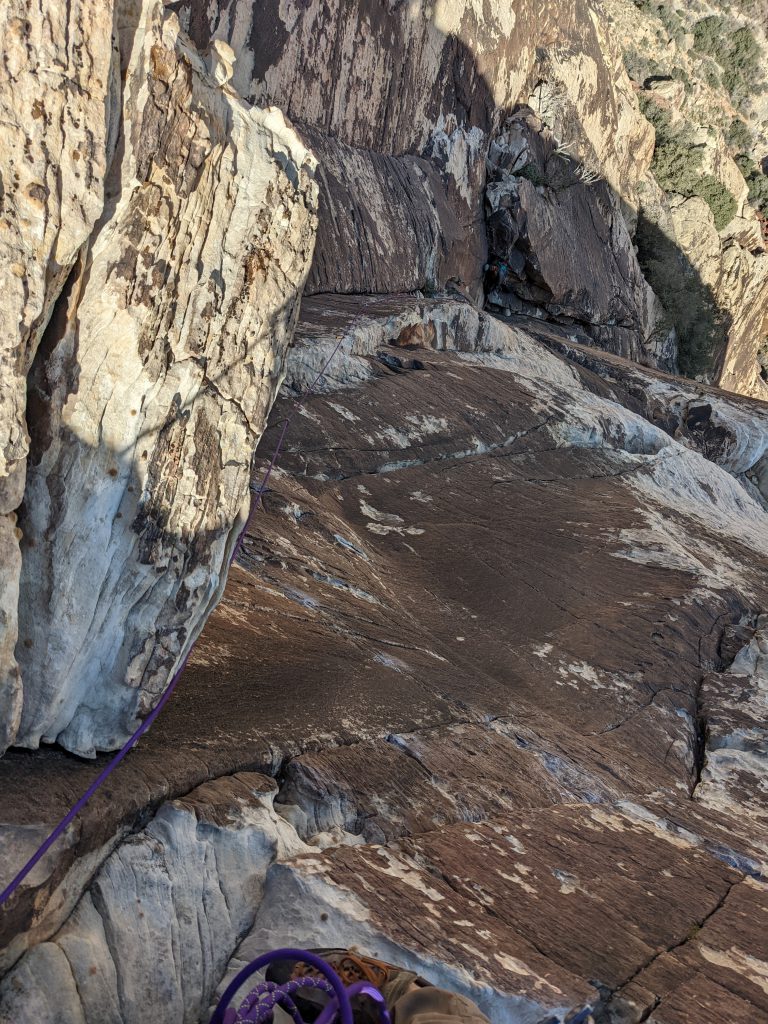
P5 – 5.8, 130′
This had some more runout slabby face, but not nearly as bad as the last. The bolt on the face is a little difficult to reach even as someone that’s 5’10” tall though. And then this goes under the chockstone, which we both were able to keep our small backpacks on for. It’s not as small of a squeeze as some climbs. The chockstone section protects well!
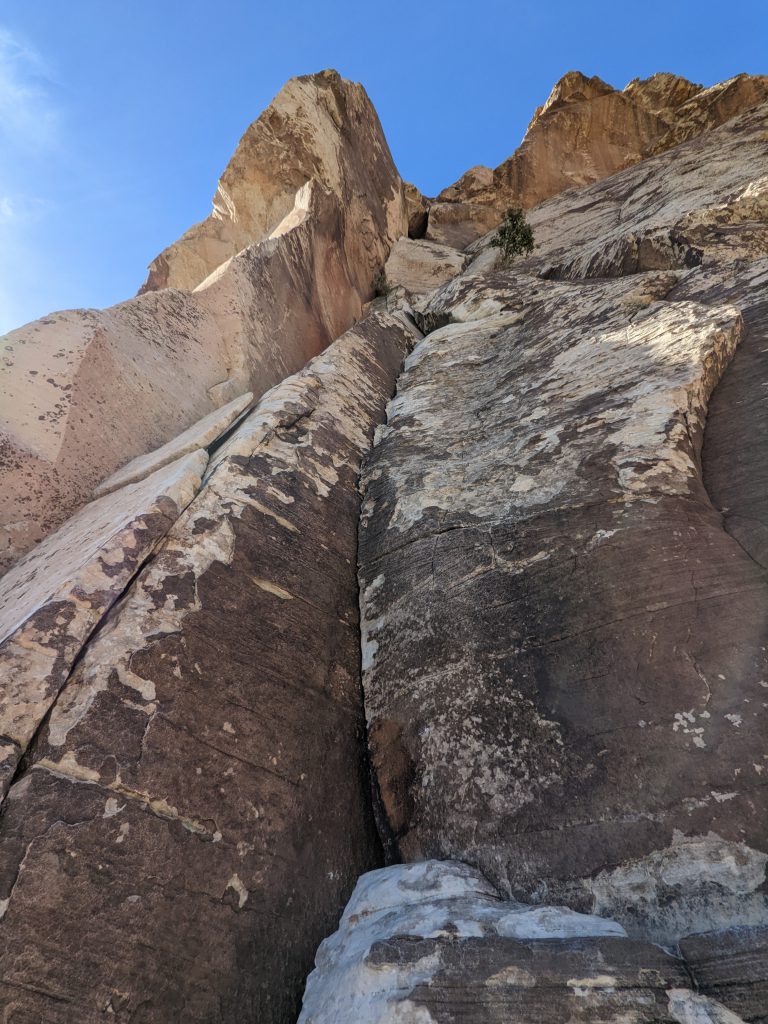

P6 – 5.6, ~190′
The start of the last pitch is a little confusing, after some time I figured out the best way was to climb up the corner and follow under the roof… looks really difficult and impossible, but there’s good hands and feet, and there’s a huge jug on the other side of the roof!
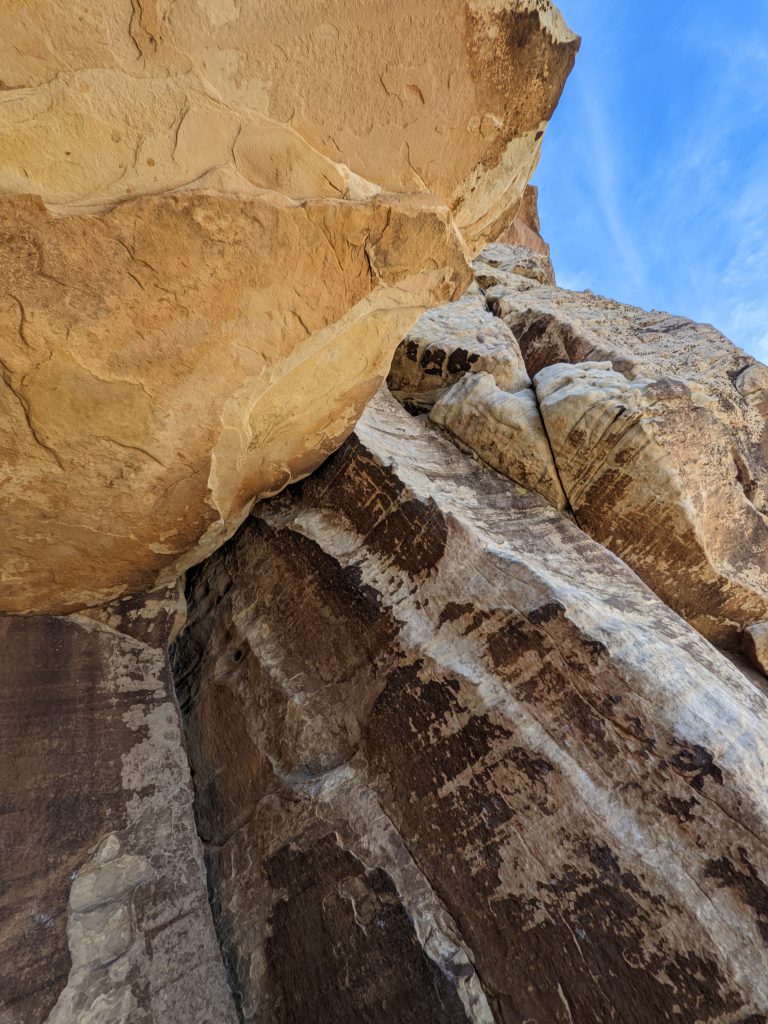
Then there’s some easy slabby face, but you actually can put in a decent amount of gear right till the crux bulge, and the bulge is actually pretty easy. And then it’s easy 5th class terrain to the top!
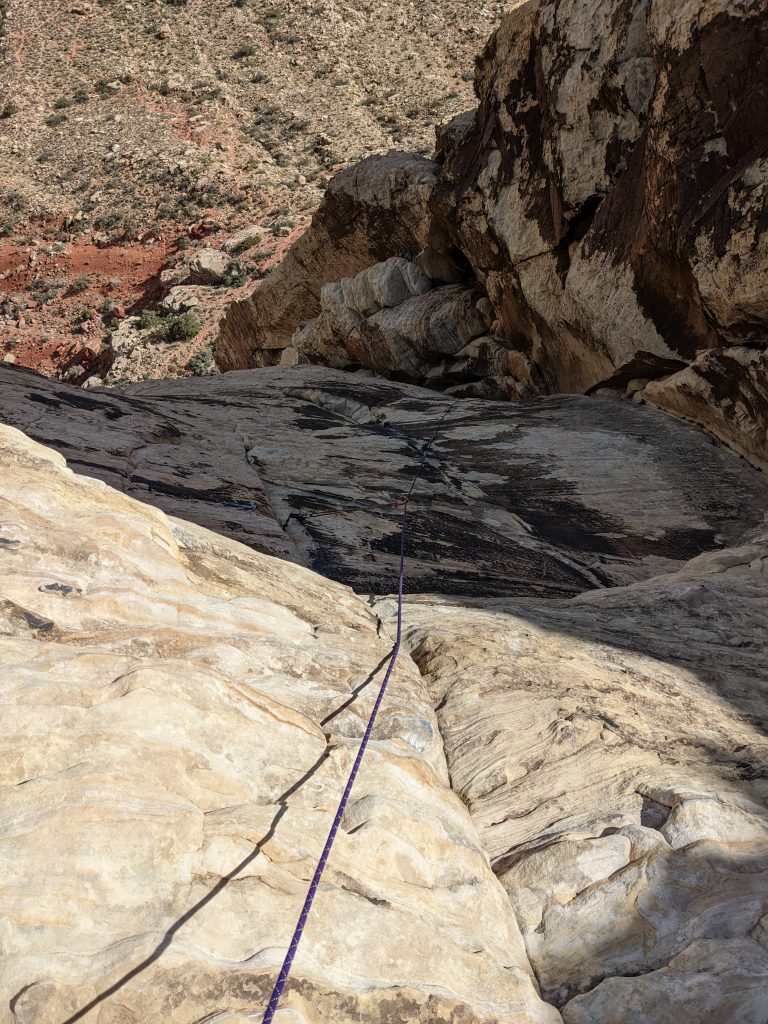
Top!
The summit’s really nice! Plenty of space to lounge around, and a good view of Epinephrine’s peak (which looks crazy long and tall).

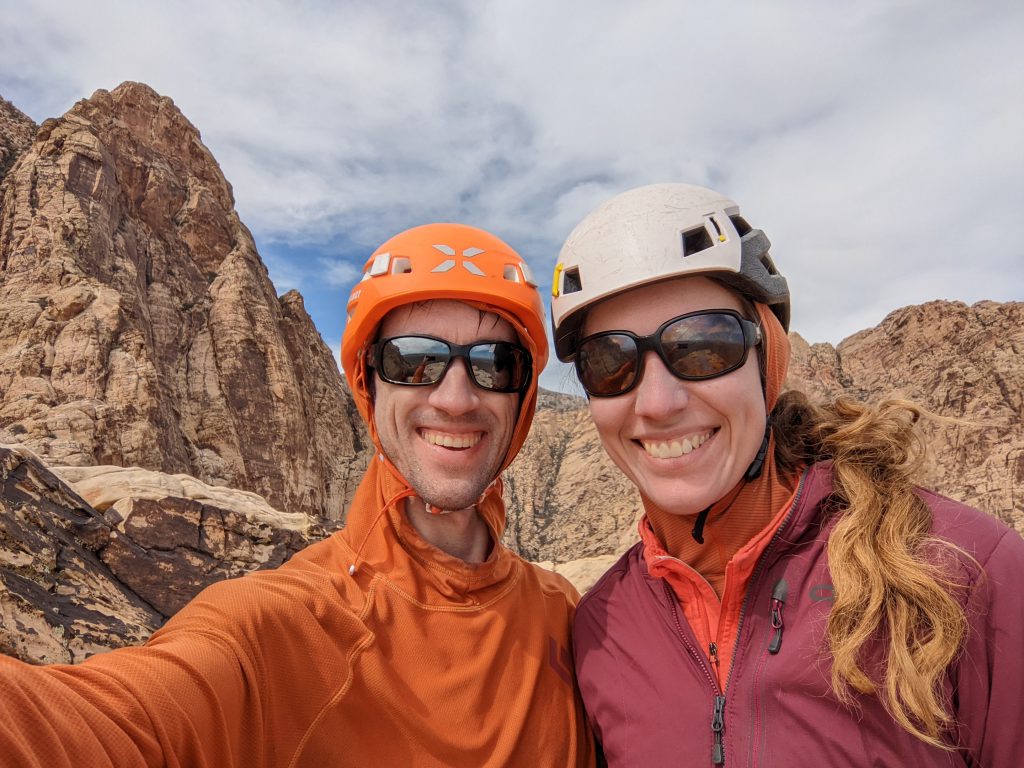

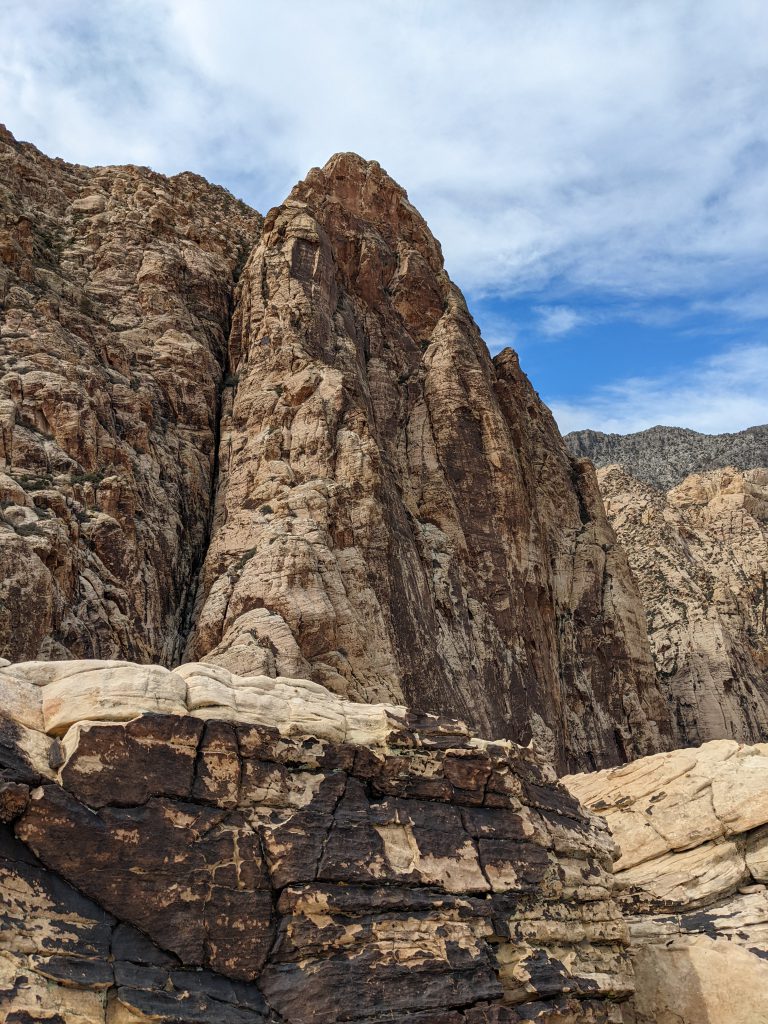
Looking at Epinephrine
Descent
This is a REALLY GOOD descent! 10/10 would do again! There’s like one or two class 3/4 moves, but they’re not exposed at all, and the trail is really obvious and it’s usually quite easy walking. It took us 50 mins to get back to the base of the climb, and that was at a slow pace while pausing to look at the views multiple times.

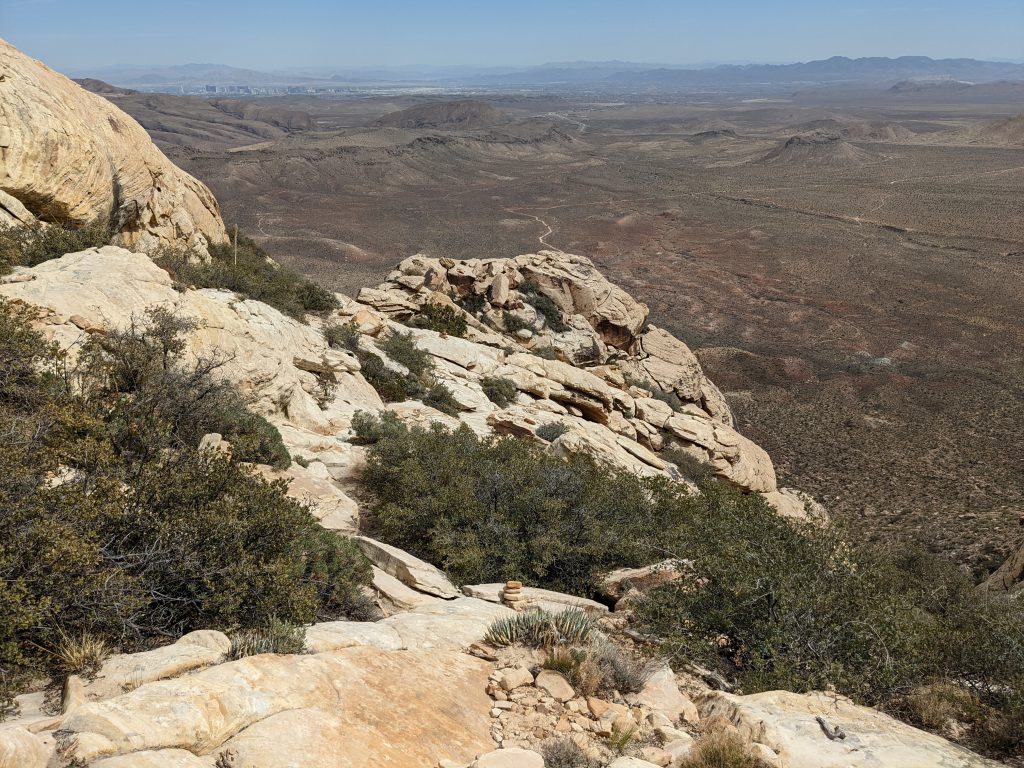
Cairn highway! 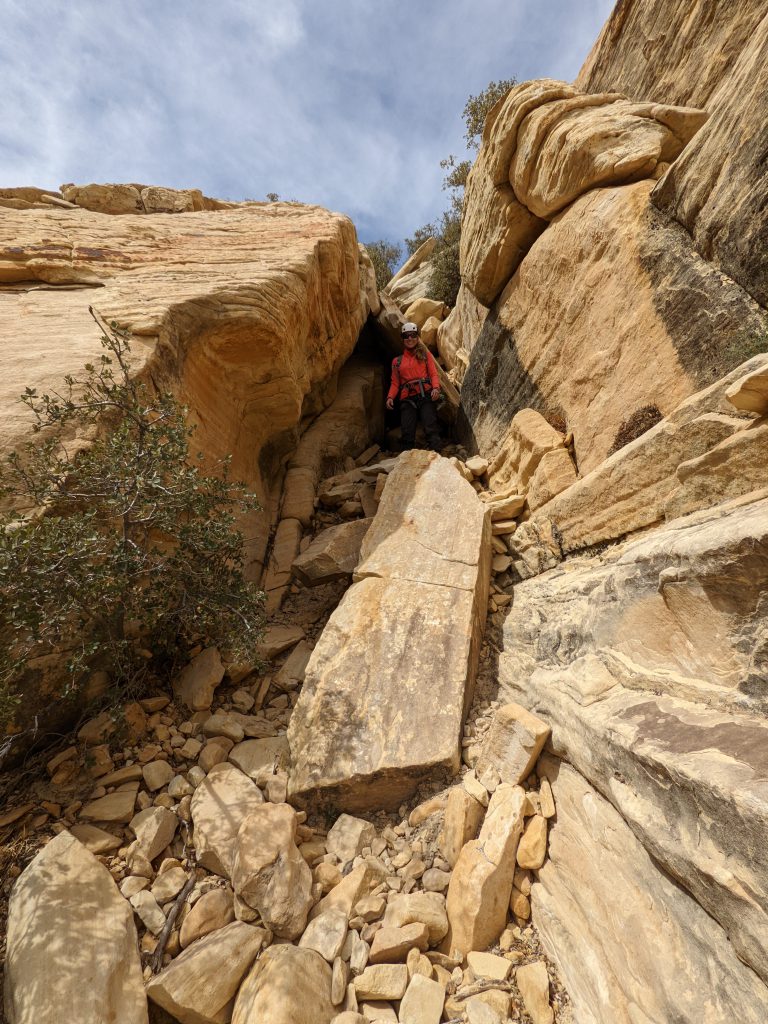
Some non-exposed scrambles down 